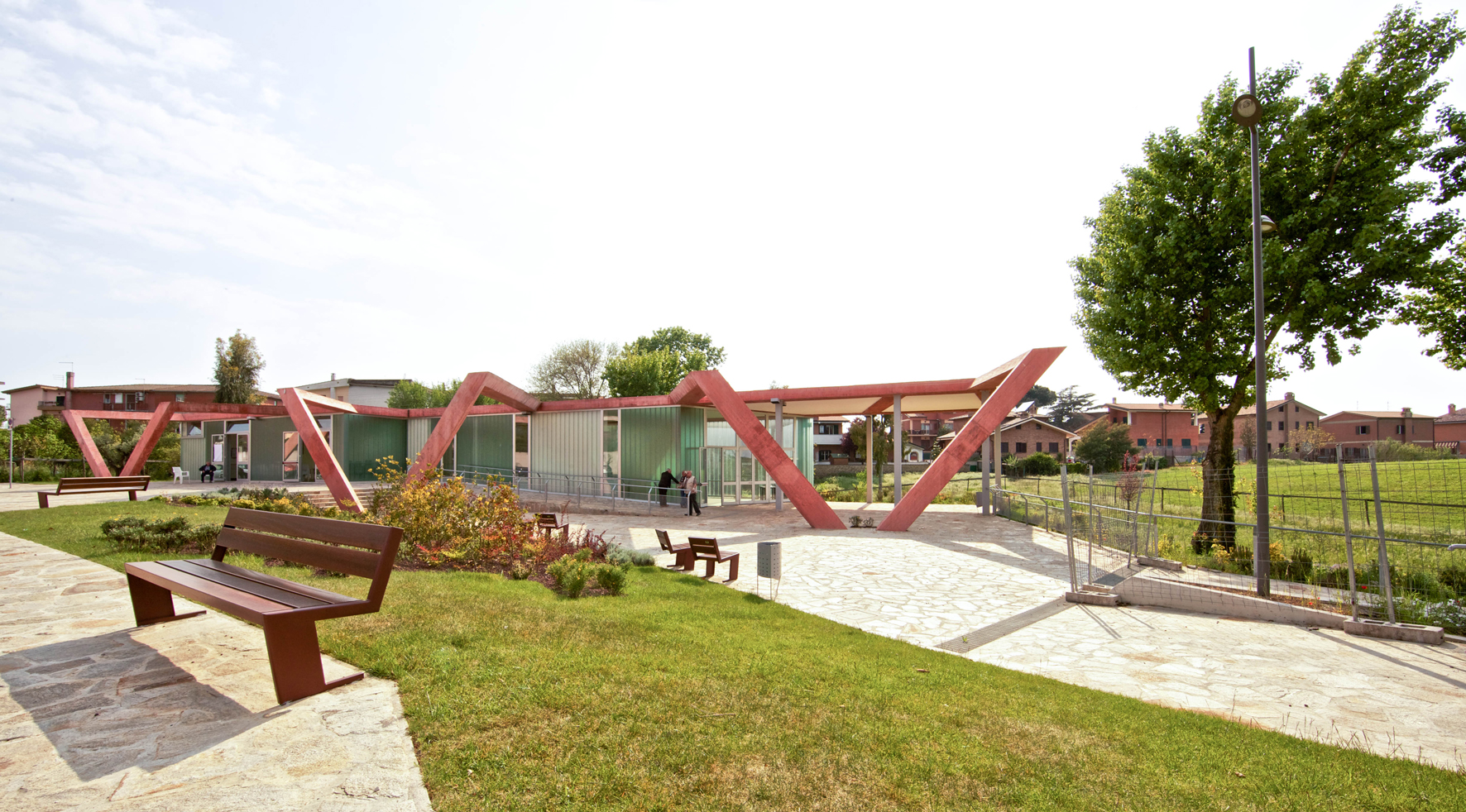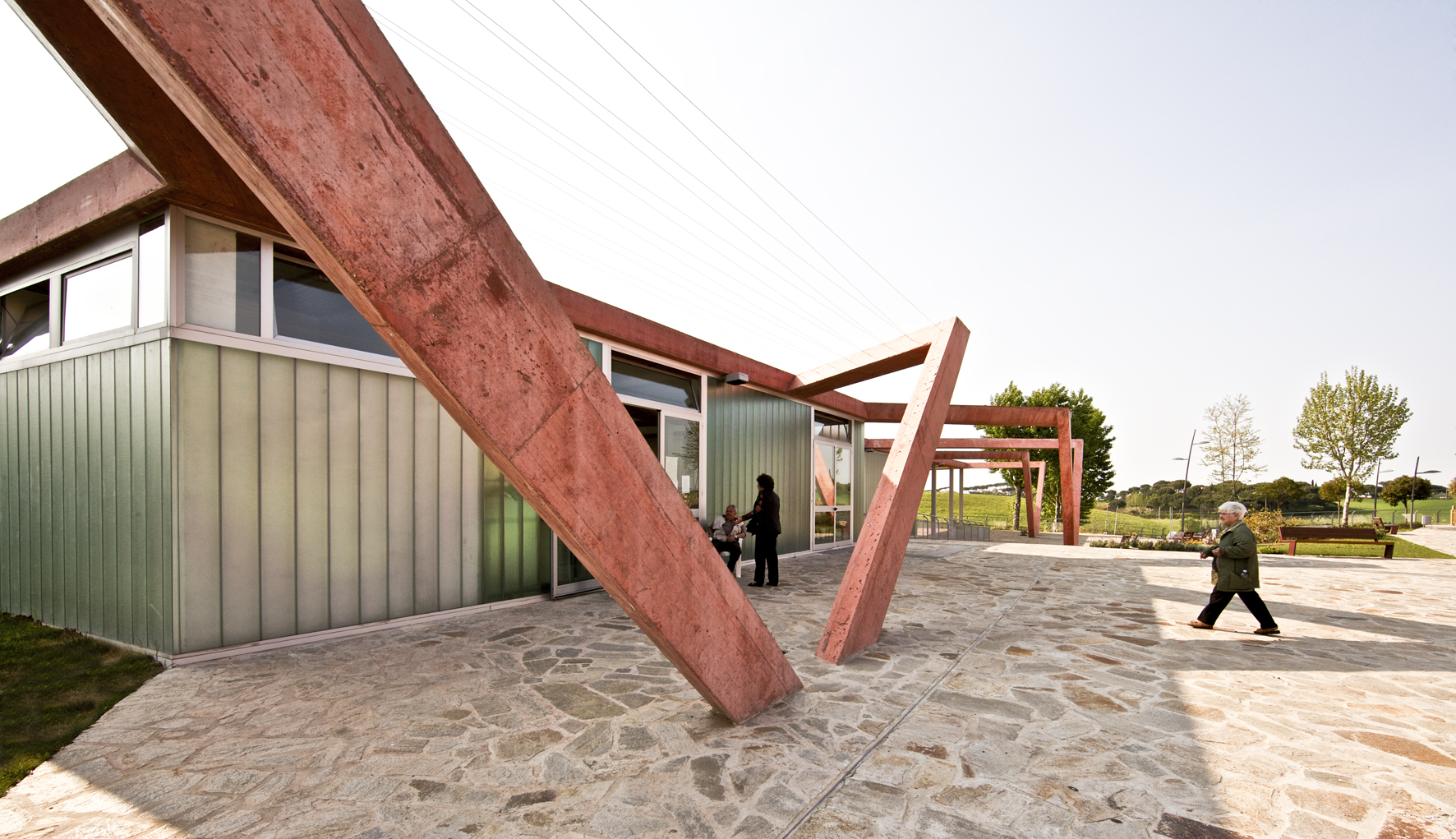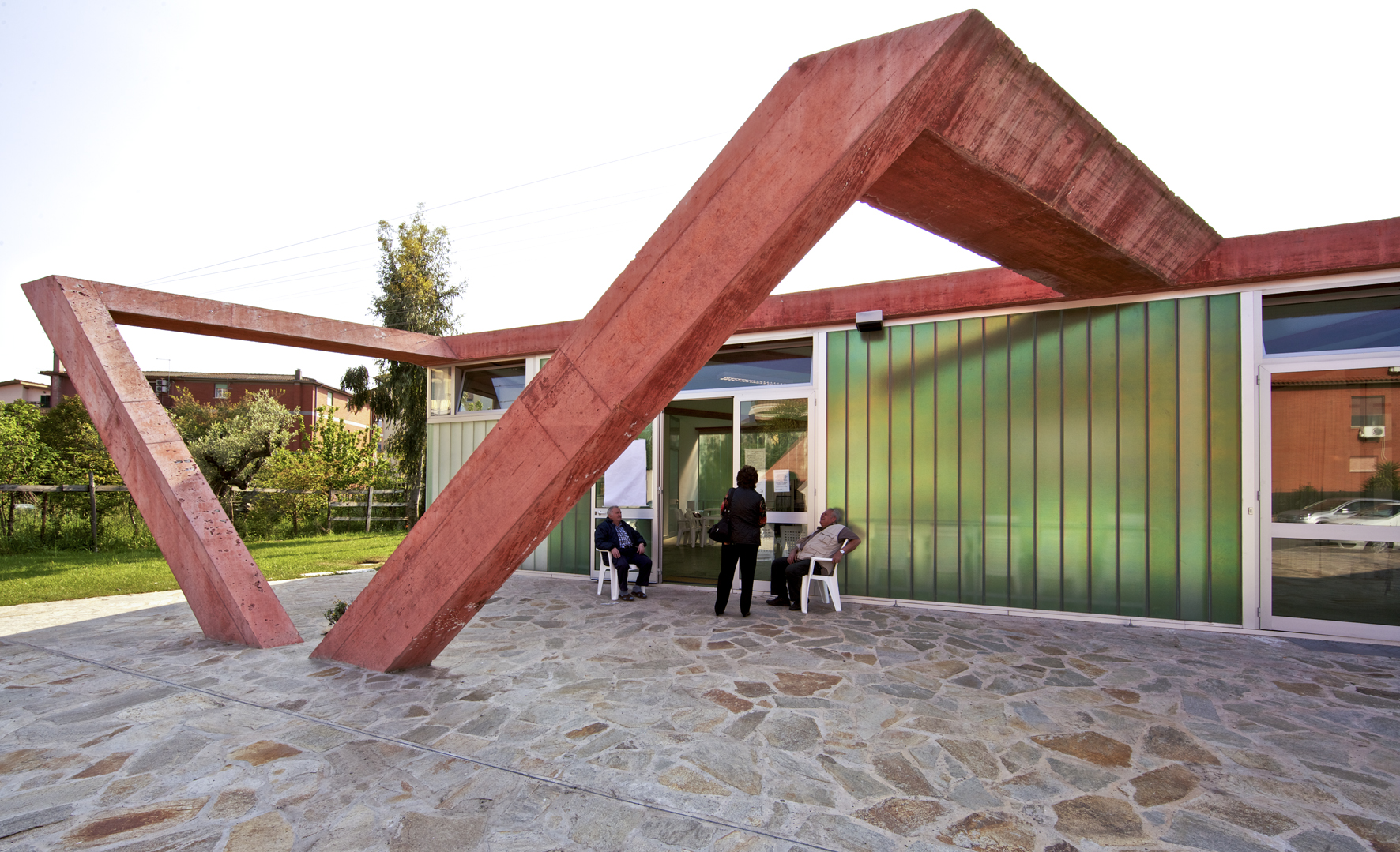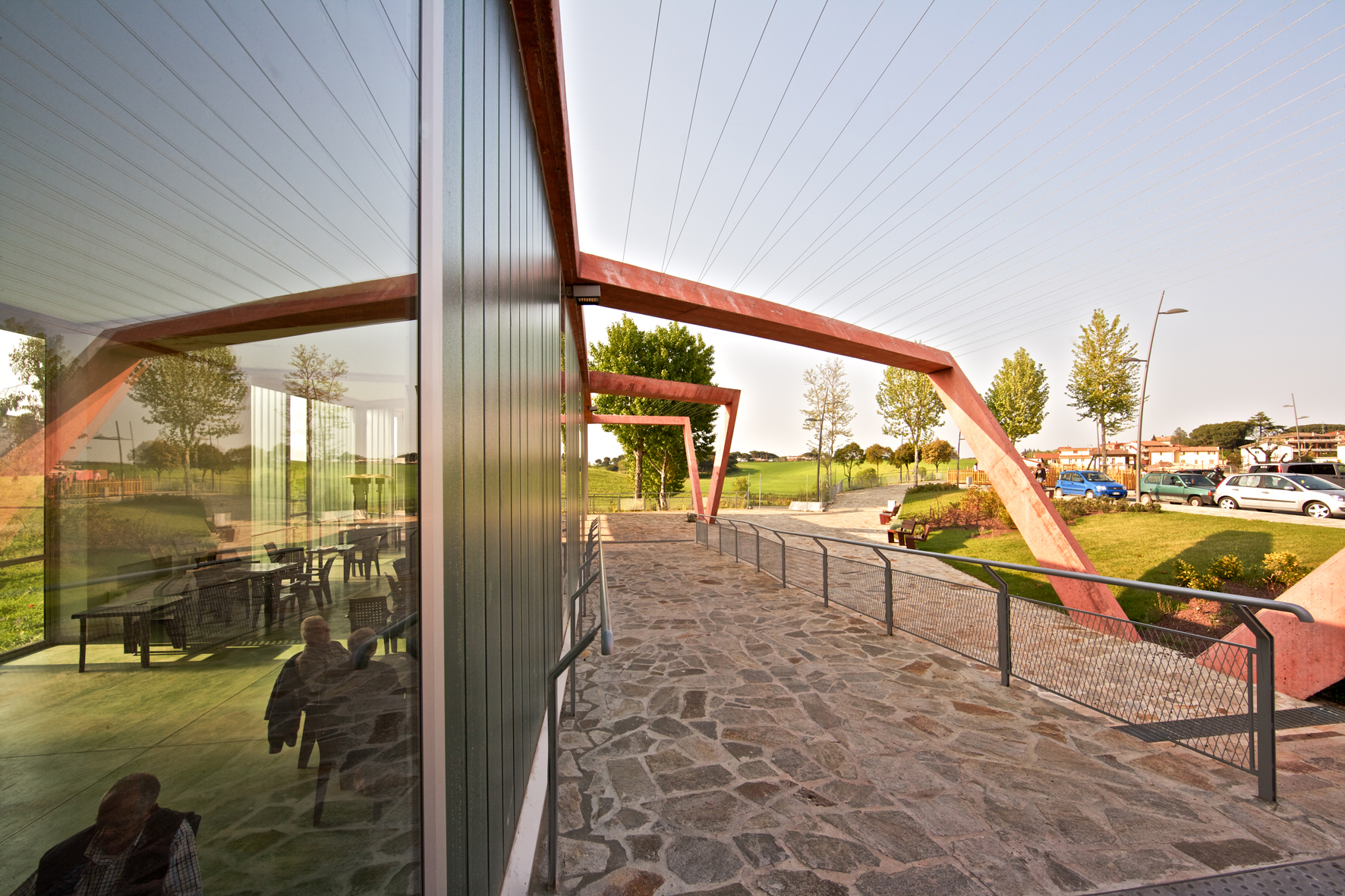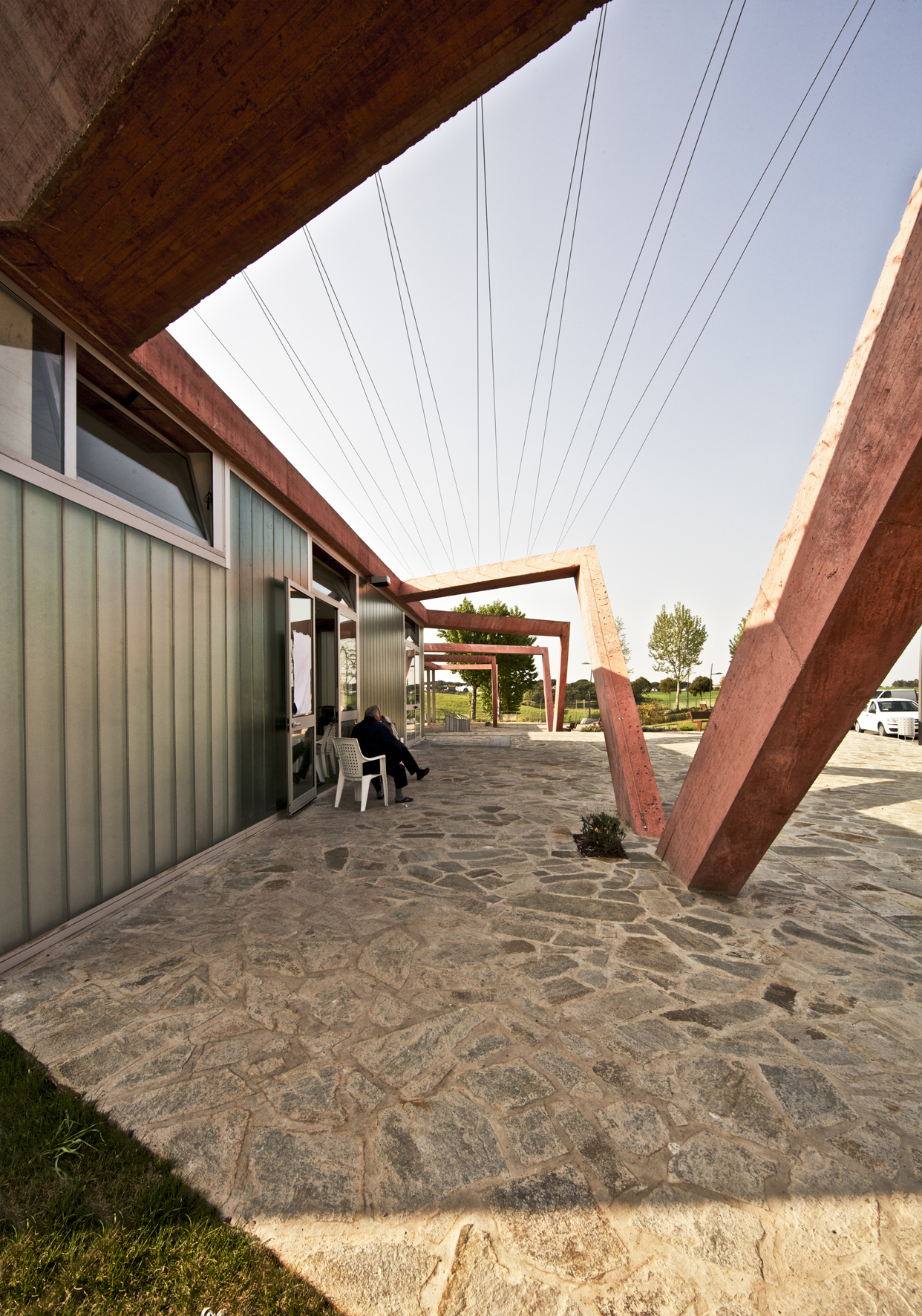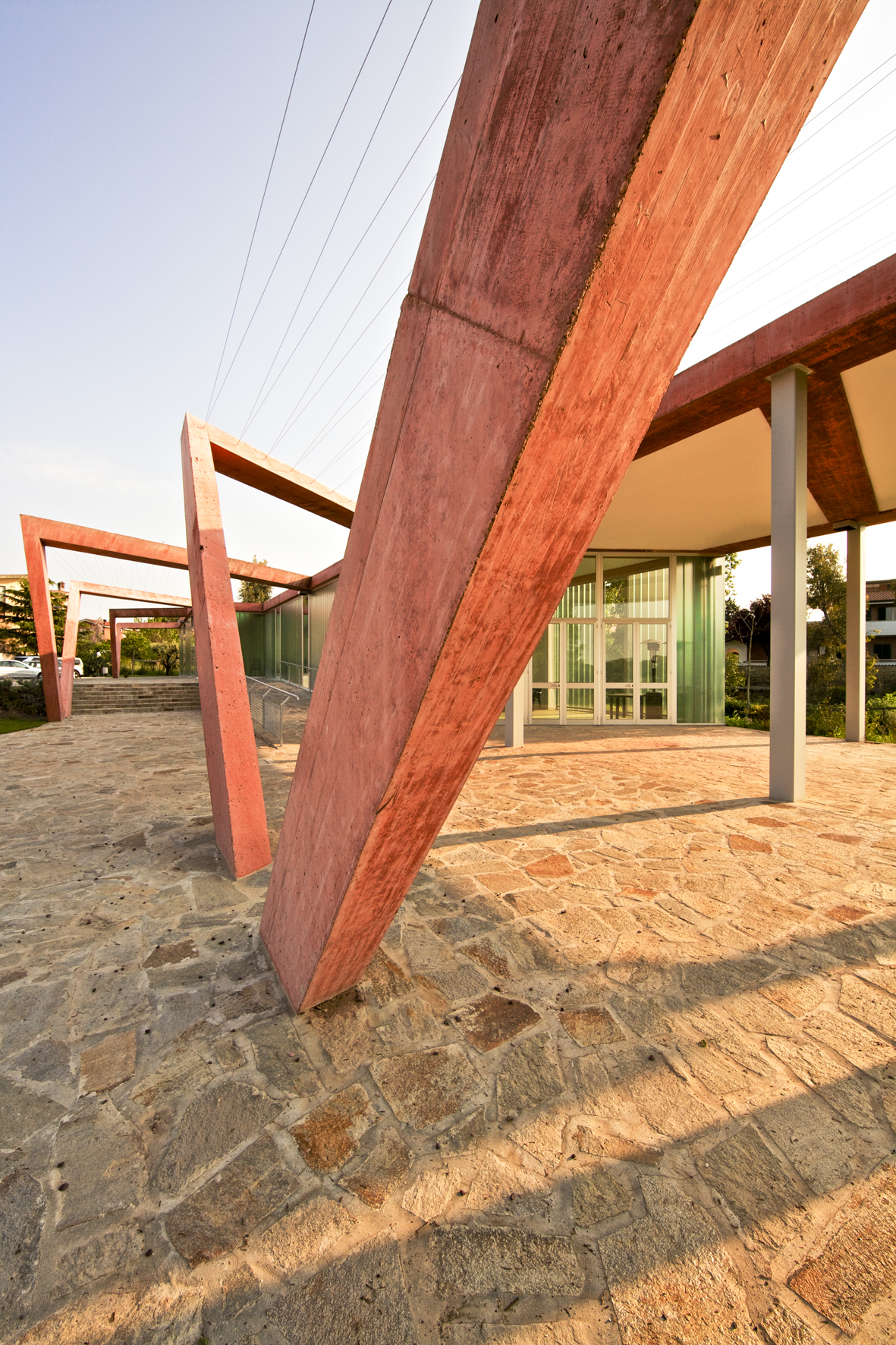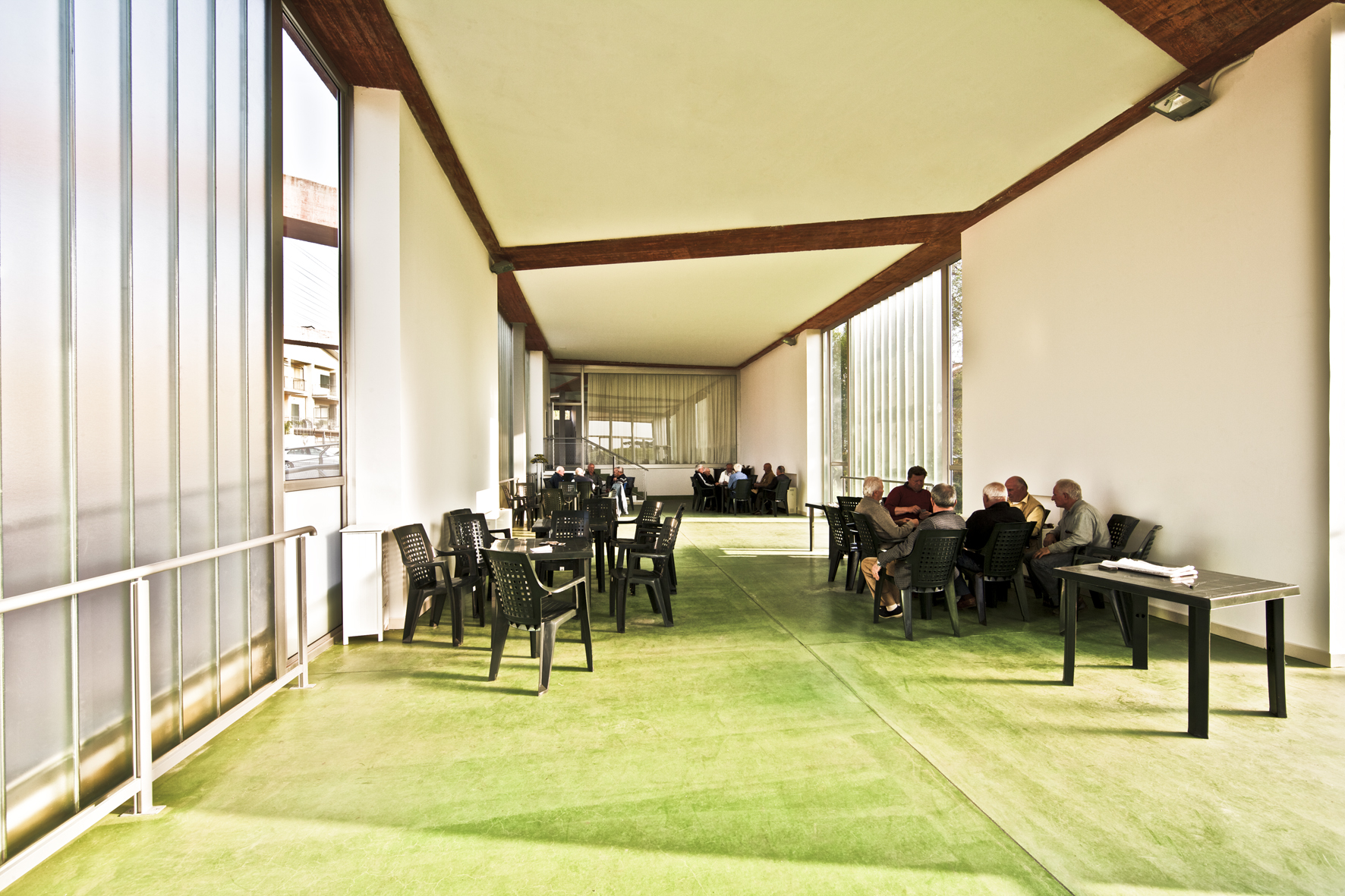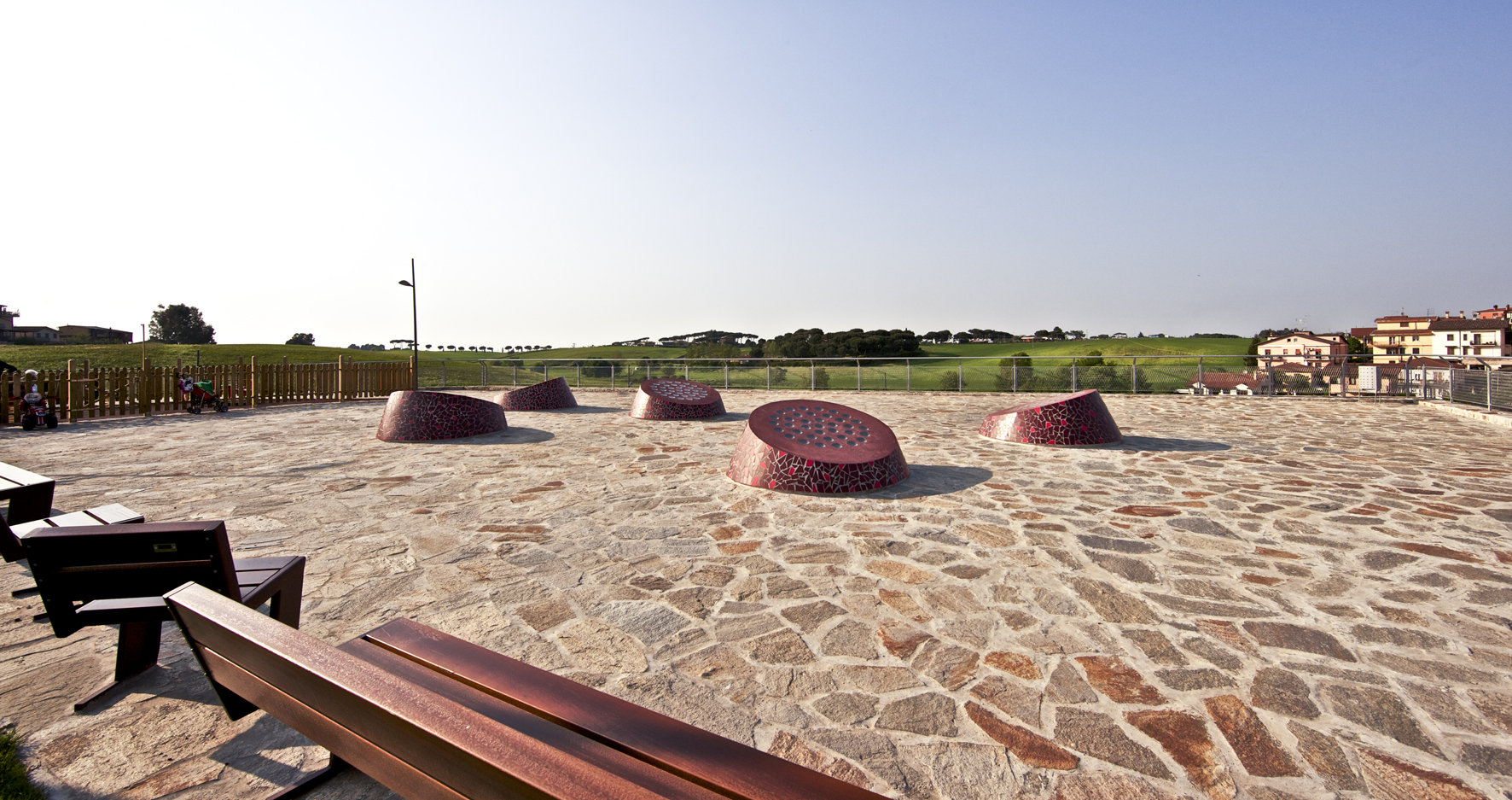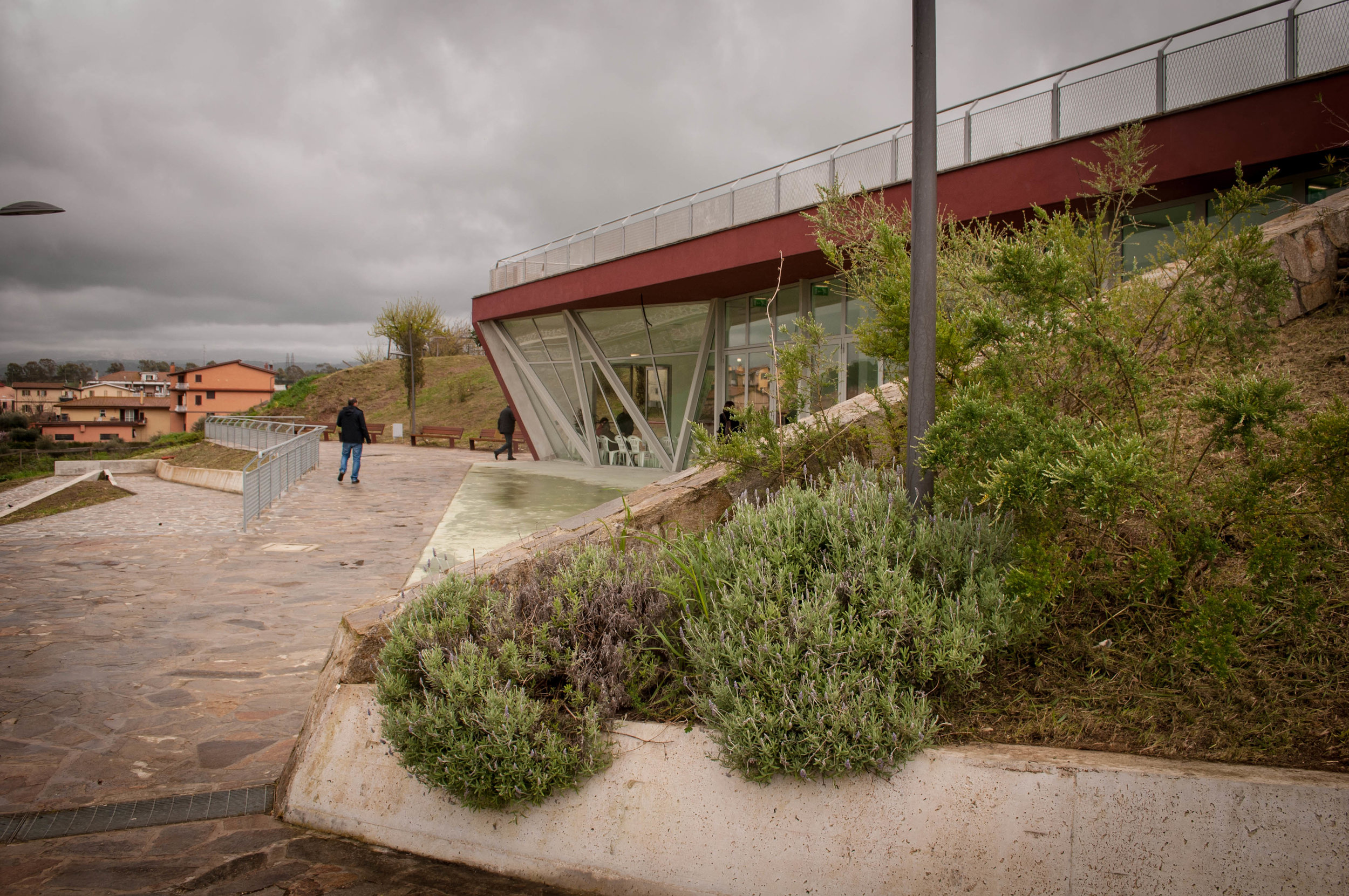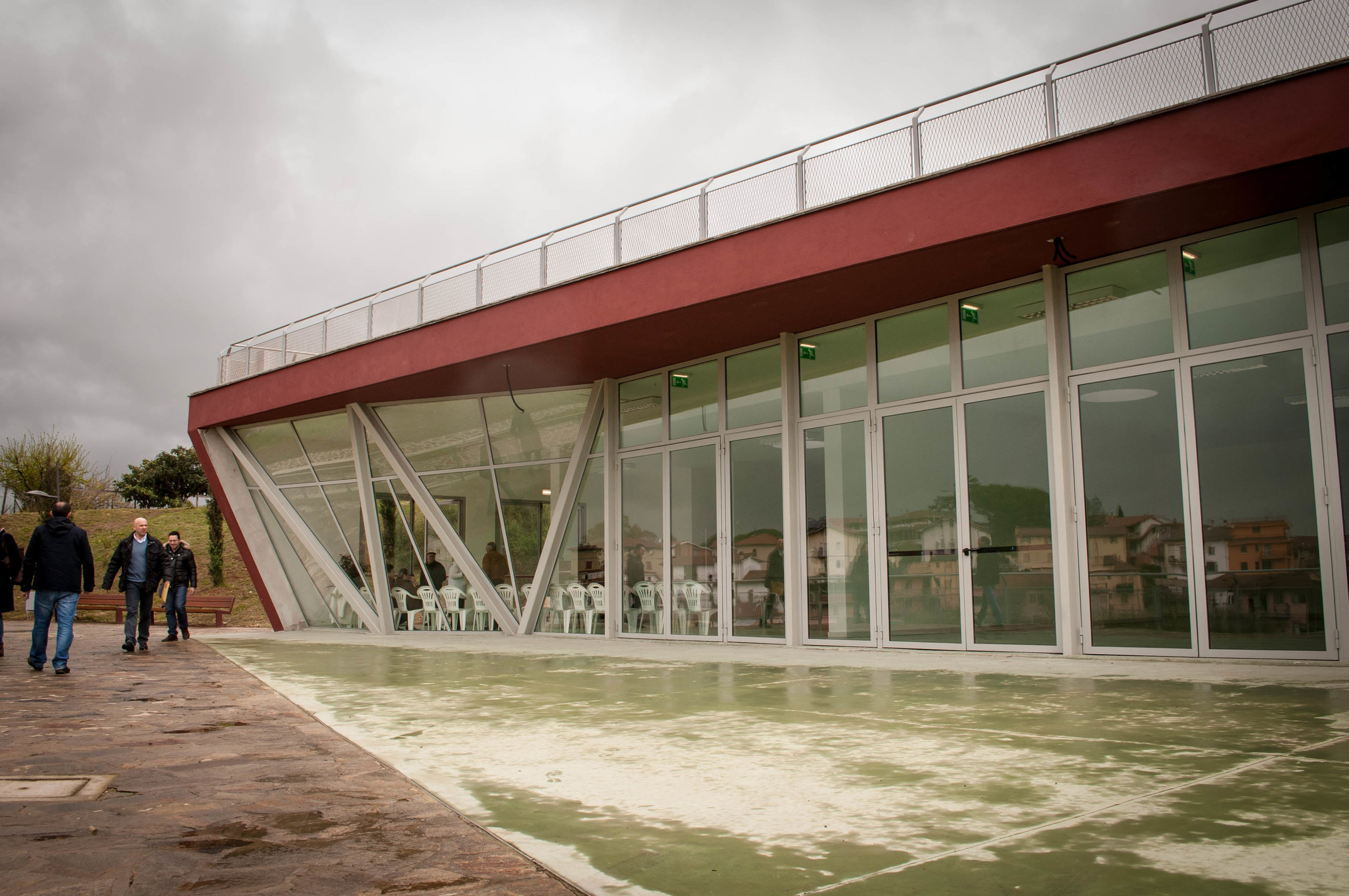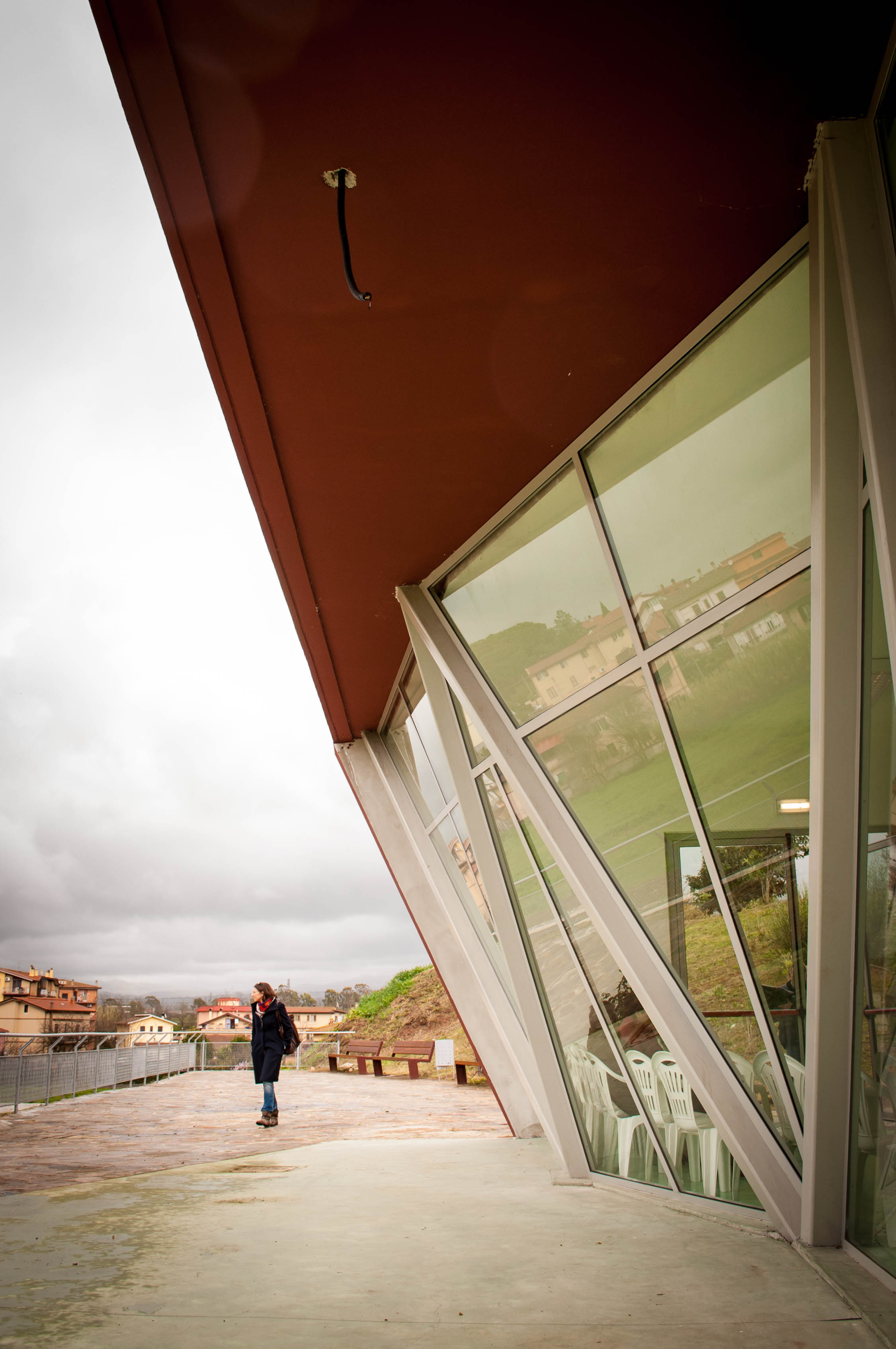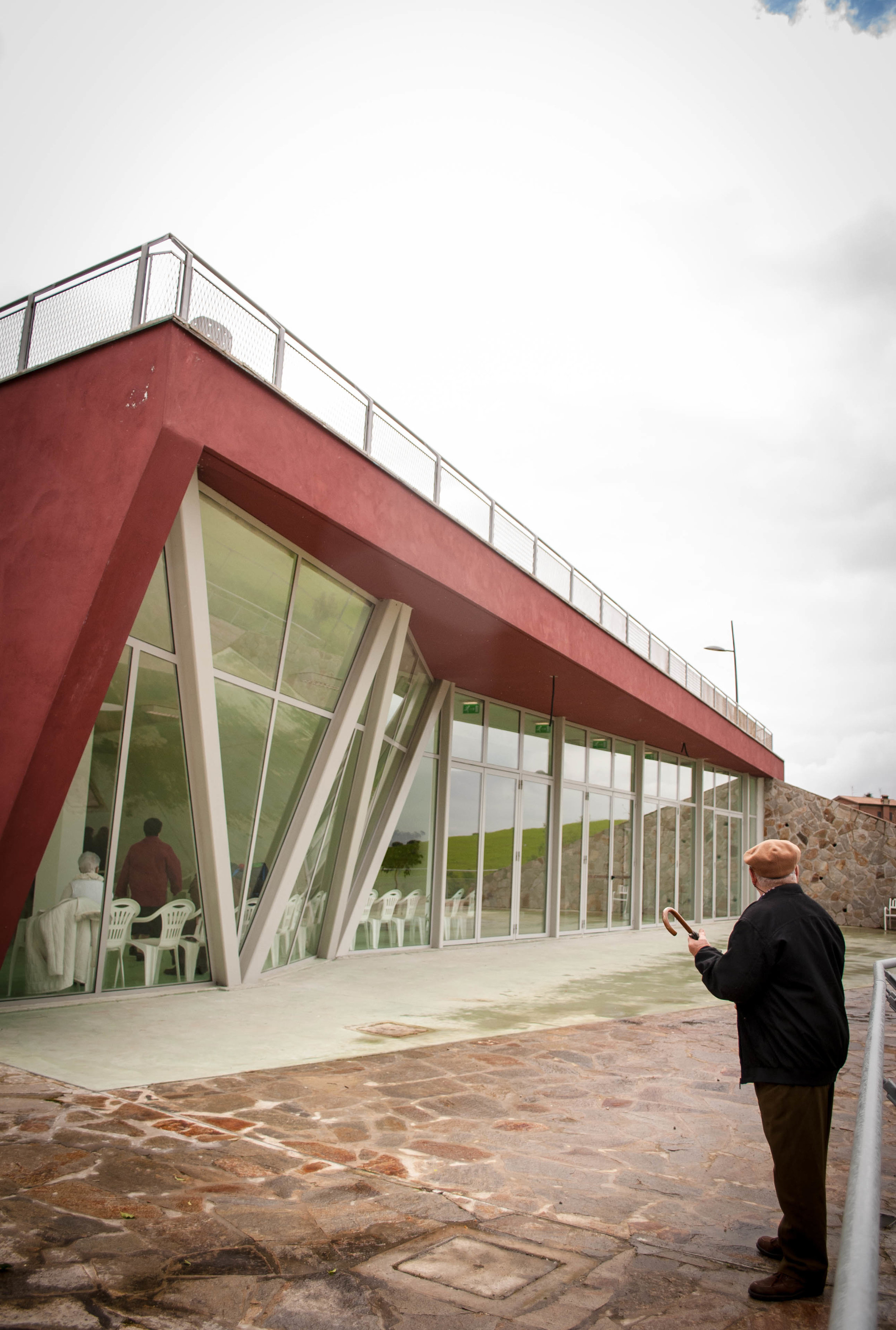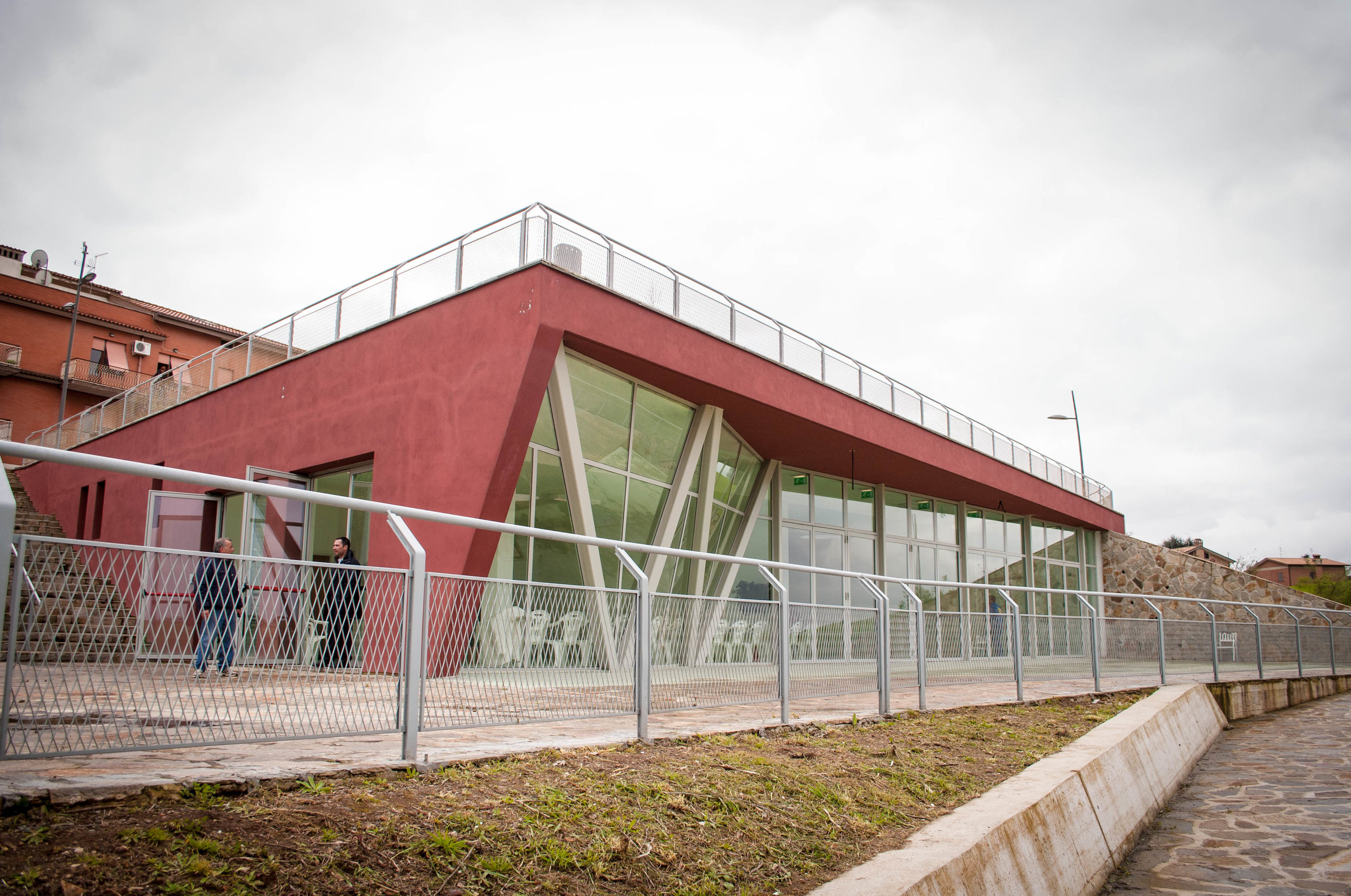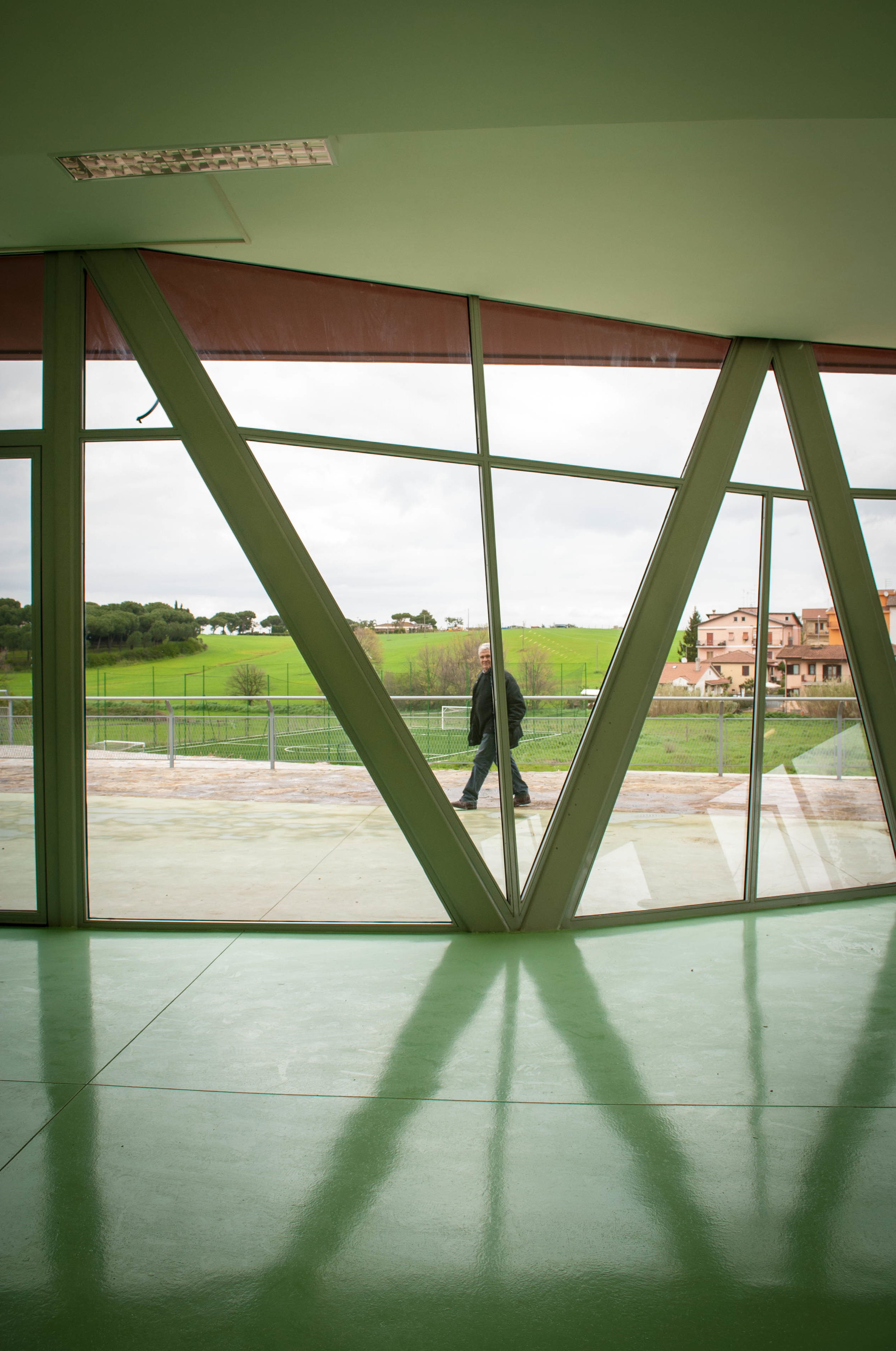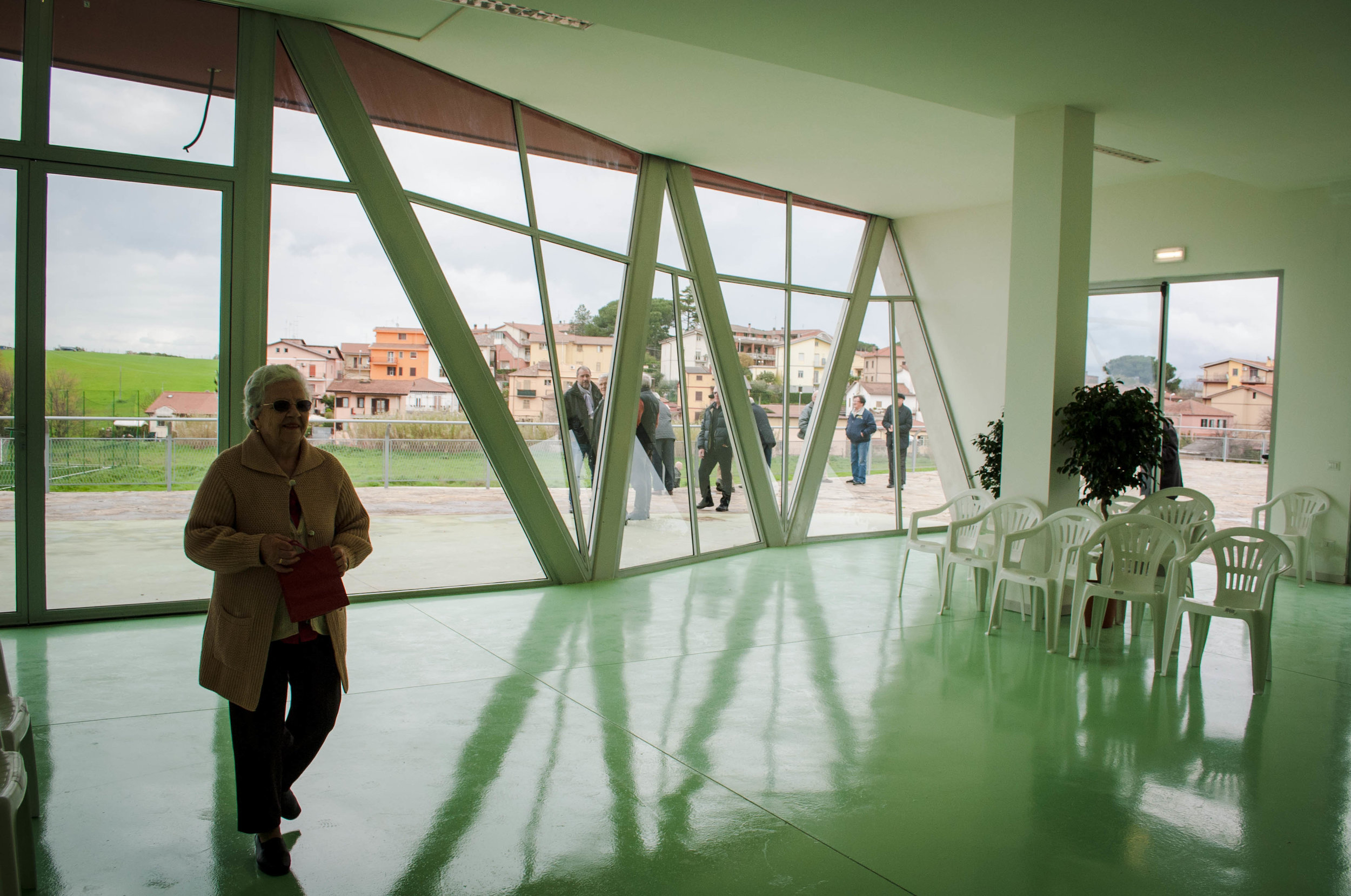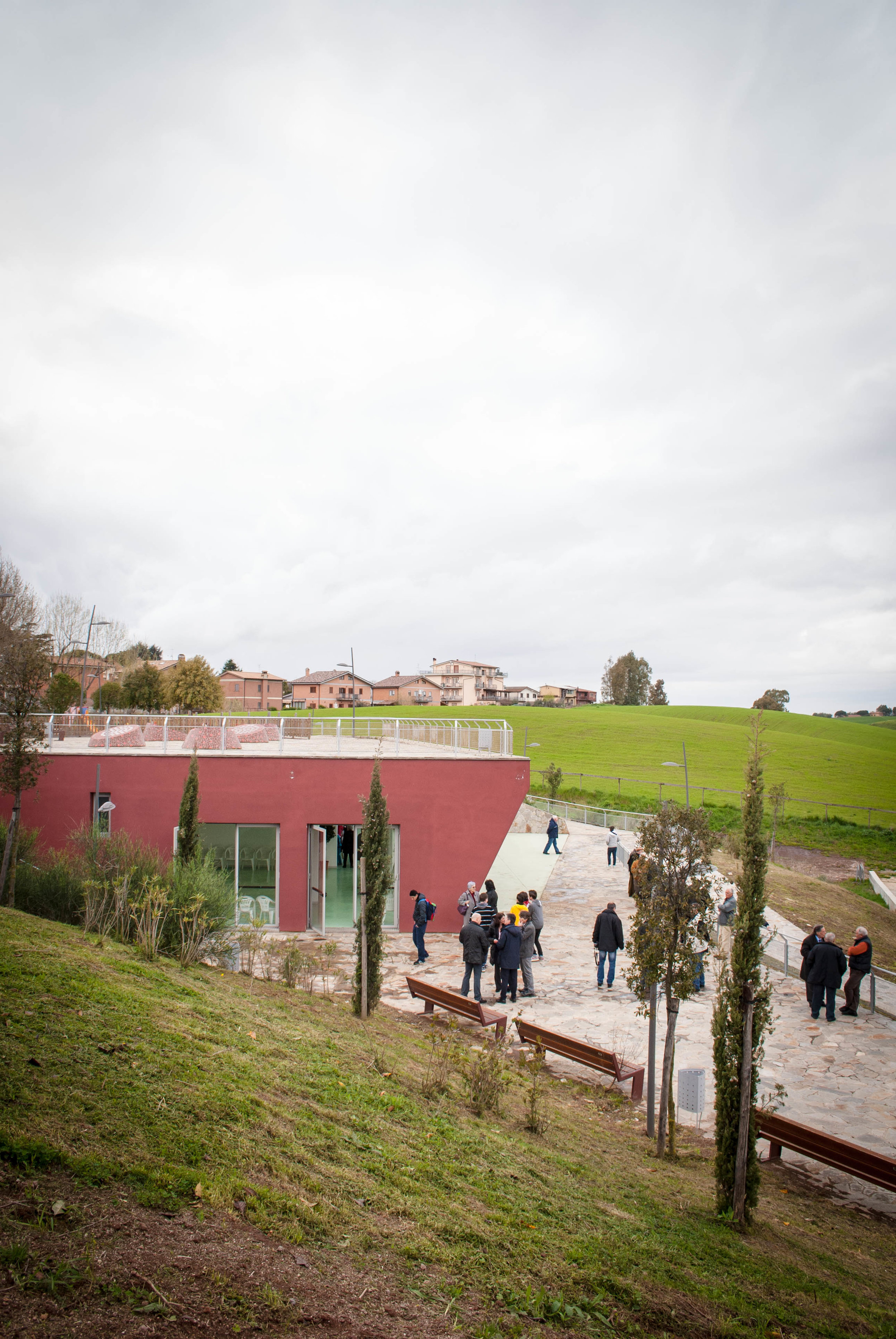Falcognana Elderly Center | Roma
Inaugurato nel dicembre 2010, il centro anziani Falcognana fa parte di un intervento di riqualificazione urbana alle porte di Roma.Insieme all’edificio, il progetto include una piazza centrale con parco giochi, una piazza verde, un parco per sport, oltre a micro giardini e passeggiate. In una posizione così periferica, l’edificio pubblico risponde all’esigenza degli abitanti di condividere tempo libero, e incoraggia il loro forte senso di comunità. L’idea cardine del progetto è la creazione di un edificio aperto, dove esterno e interno siano in relazione costante e instaurino un dialogo aperto tra natura e architettura. Il contesto presenta un carattere insieme artificiale e naturale, che il progetto vuole mantenere evidente per costruire un edificio pubblico capace di riqualificare l’agglomerato urbano e riorganizzare la vita sociale del luogo.
Il centro anziani (400mq circa) consiste di due semplici e ampi spazi, separati da una parete di vetro con 1,05 metri di dislivello; i servizi sono al livello superiore come l’entrata principale. Gli elementi a V in cemento diventano le travi del tetto aggettante, mentre le trasparenze del vetro concludono la parte interna. I rivestimenti di resina verde sul pavimento di cemento stabiliscono una continuità cromatica con i prati circostanti. Il cemento della struttura è colorato con pigmento rosso – tipico colore degli edifici di campagna romani – e determina un effetto crudo quasi brutale che enfatizza la qualità del materiale. Le tre sezioni romboidali delle travi verticali inclinate sono l’elemento distintivo dell’edificio e diventano travi del tetto aggettante; tra trave e trave, cavi d’acciaio permettono di far crescere elementi vegetali, con l’obbiettivo di creare un porticato tra l’edificio principale e la piazza.
Come gli spazi interni, anche quelli esterni e semiprivati che collegano l’edificio sono pensati come un’estensione di spazi domestici capaci di ospitare le spontanee attività sociali degli abitanti.
* * *
Opening on December 2010, Falcognana Elderly Center is part of an urban redevelopment on the outskirts of Rome; besides it, the intervention involves a central square with a children playground, a green square, a park with sport facilities, micro gardens and walkways. In such a peripheral location, the public building responses to the will and the need of elderly local residents to spend their free time together and supports their strong sense of community.
The main design idea is to create an open building, where inside and outside space are constantly relating to each other, establishing an open dialogue between nature and architecture, since, as a matter of fact, the site is at the edge between an irregular high density residential texture and the rich countryside surrounding it. The context for the project is both a human and a natural one. Moreover, it aims to keep the strong natural character of the place and to build a public facility which is able to qualify the entire built agglomeration and to organize its active social life. The elderly center consists simply into two big spaces, which are divided by a glass wall, with a difference of 1,05 m between the rooms’ floors. Services are on the upper level, where also the main entrance is located. Total interior surface is ca. 400 sqm. The building envelope’s geometry consists in a wrapping device. A continuous system allows to forget the traditional reference of enfolding for an architecture of becoming, where superimposition of plans is replaced by surfaces’ continuity. The V-shaped concrete elements sprout up from the ground, like roots, and turn into beams of the roof slab, while various transparencies of glass define a protected enclosure below. The materiality of the glass skin is declined from translucent industrial cast U-glass to full-high transparent cuts, sometimes with glass doors, which drag nature into the building and make sun filtering through, constantly changing the interior lighting during the day. The glass façade overlooking the countryside panorama creates a permanent contact with the landscape, from an inclusive place, which is thought itself as a fragment of nature’s complexity. The green resinous coatings on concrete flooring establish a chromatic continuity with the meadow outside. Structure defines architecture and its language in its purest form. The intention is to employ a material that is widely used in construction in Italy, but trying to turn it into a form of expression, by way of a simple construction system and the use of color. The achieve is a crude, almost brutal, effect that emphasizes its material quality. Concrete is colored with red pigment - a color which is very typical for the Roman countryside buildings - in the mixture to get an homogeneous material to mold. The three pairs of rhomboidal section inclined vertical columns are the building’s distinctive features. Starting from the same point on the ground two by two, they open up and fold becoming beams of the roof slab; in-between the pairs of beams, steel cables allow vegetation to grow, creating a protected porch between the main building and the square.
These beams outline a geometric grid, characterizing both roof horizontal surfaces, by way of their red color but also through a small intrados relief (6 cm). The roof slab is supported punctually at each beam intersection vertex by steel columns. Outer public and semi-private spaces adjoining the building, as well as its interior, are conceived as an extension of domestic space, hosting the spontaneous social initiatives of the inhabitants. As in the local practice of use of land, countryside and urbanity merge together, for an ecologic conversion of territory into a living landscape.

